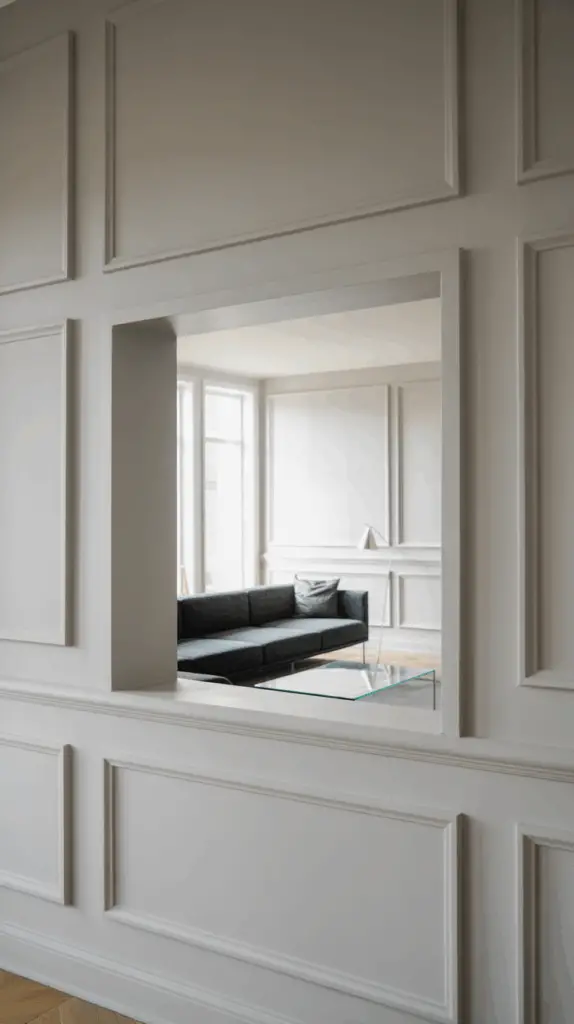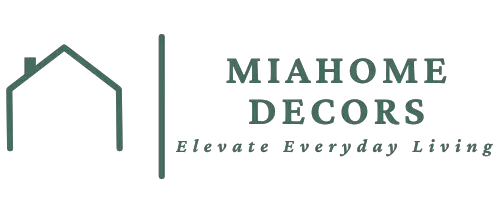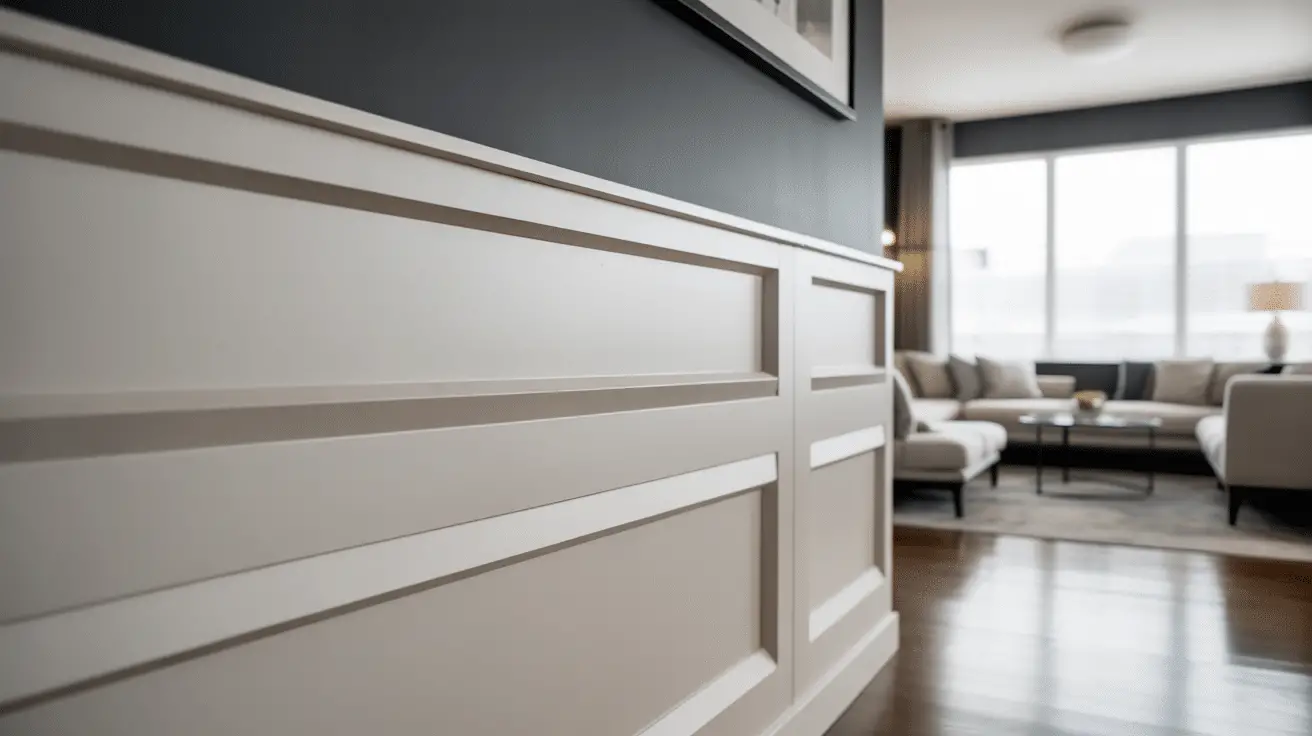Modern Interpretations of Traditional Wainscoting Styles: Elevate Your Home with Timeless Elegance
Table of Contents
Introduction: The Enduring Appeal of Wainscoting
Wainscoting is a classic element in home decor, evoking an air of timeless sophistication. Originally used in the 17th century for insulation and protection, this architectural feature has evolved into a beloved decorative element in modern interior design. Whether in traditional or contemporary homes, wainscoting adds texture, depth, and an undeniable charm to any space. But as tastes shift and trends evolve, how can homeowners incorporate this traditional style in a way that feels fresh, modern, and fitting for today’s interiors?
The beauty of wainscoting lies in its adaptability—it can be tailored to suit a variety of design aesthetics. While traditional wainscoting features like raised panels and intricate moldings may still have their place in formal, period-style homes, modern interpretations allow for clean lines, minimalistic designs, and innovative materials that align with the needs of contemporary living.
In this article, we’ll dive deep into how modern wainscoting styles are redefining classic designs. From sleek and simple designs to innovative materials and bold color choices, we’ll explore how to make wainscoting work in a modern context, while still preserving its rich historical charm. Whether you’re looking to add an elegant touch to your living room, create a statement in the hallway, or update your kitchen, this guide will inspire you to blend traditional wainscoting with a modern twist.
Understanding the Basics of Wainscoting
Wainscoting may seem like a purely decorative element, but it’s important to understand its roots and the traditional styles that have stood the test of time. Originally designed for practical purposes, wainscoting was used in the 17th century to protect walls from dirt and dampness, particularly in areas like hallways and kitchens. Over time, it evolved into a highly decorative element that added beauty and texture to any room. Today, wainscoting serves both aesthetic and functional purposes, enhancing interior spaces with style, while also protecting lower walls from scuffs and damage.
Traditional wainscoting features include raised panels, beadboard, and intricate woodwork. Raised panel wainscoting, for instance, uses panels that are set into the wall with molded trim around the edges, creating a rich, dimensional look. Beadboard, with its vertical wood slats, is another popular option in more casual or coastal-inspired homes, offering a subtle texture. Classic wainscoting designs often incorporate crown molding and baseboards, contributing to their elegant appearance.
Understanding these foundational styles is crucial when adapting them to modern interpretations. A minimalist approach or a cleaner aesthetic can be achieved by stripping back the ornate detailing while retaining the charm and texture wainscoting adds to a room.
Table: Types of Traditional Wainscoting Styles
| Style | Description | Ideal For |
| Raised Panel | Features panels set into the wall with trim around the edges | Formal settings, traditional homes |
| Beadboard | Vertical wood slats creating a classic texture | Casual, coastal, or cottage-style rooms |
| Flat Panel | A simpler, sleeker design with flat surfaces | Modern, minimalist interiors |
| Board and Batten | Vertical boards separated by battens, giving a structured, rustic look | Farmhouse or rustic interiors |
Sleek and Simple: Minimalist Wainscoting for Modern Interiors
While traditional wainscoting is often elaborate and detailed, modern interpretations lean toward clean lines and simplicity. Minimalist wainscoting focuses on creating a streamlined, subtle effect without heavy detailing. This style works well in contemporary homes or spaces where less is more.
The most common approach in minimalist wainscoting is the use of flat panels, where smooth, unembellished surfaces are framed with thin trim. This results in a simple, elegant finish that adds dimension to the walls without overwhelming the room’s design. Another option is board and batten, but with a lighter, less bulky feel—narrower battens and spaced panels create a fresh, airy look.
One of the benefits of minimalist wainscoting is that it pairs well with almost any style of home decor, from mid-century modern to Scandinavian-inspired interiors. The simplicity of the design also allows it to function as a backdrop, allowing other elements—such as art, furniture, or lighting—to shine.
Table: Minimalist Wainscoting Design Considerations
| Element | Consideration | Effect & Purpose |
| Panel Style | Flat panels with simple, unembellished edges | Creates a clean, contemporary aesthetic |
| Trim Size | Thin, subtle trim | Maintains a minimalist, light appearance |
| Material | Light woods or painted finishes (e.g., white, light gray) | Enhances openness and airiness |
| Spacing between Panels | Wide spacing between panels | Adds to the feeling of spaciousness |

Incorporating Bold Color: Wainscoting as a Statement
Traditionally, wainscoting was most often painted in neutral shades like white, cream, or light gray, but modern interpretations are introducing bold color choices to make a statement. The use of deep hues—such as navy, charcoal, or even muted jewel tones—can transform a room, elevating the wainscoting from a subtle accent to a focal point.
One popular trend is to contrast the wainscoting color with the rest of the walls. For instance, a darker wainscoting paired with lighter wall paint creates visual interest and depth. Alternatively, painting the wainscoting in a vibrant color can add a pop of personality, especially when it contrasts with the rest of the room’s decor.
This technique is especially effective in smaller spaces like hallways or bathrooms, where a bold wainscoting color can give the room a modern and dramatic flair without feeling overpowering.
Table: Bold Wainscoting Color Combinations
| Wainscoting Color | Wall Color Pairing | Effect & Purpose |
| Navy | Light gray or white | Creates a sophisticated, dramatic contrast |
| Charcoal | Soft pastel tones (e.g., pale pink, mint) | Adds depth and creates a modern, chic look |
| Forest Green | Off-white or beige | Brings warmth and richness to the space |
| Mustard Yellow | White or soft neutral tones | Offers a vibrant, cheerful aesthetic |
Mixing Materials: Wainscoting with Innovative Finishes
Incorporating unconventional materials into wainscoting is a growing trend that combines the timeless appeal of traditional wood with new textures and finishes. For example, mixing wood panels with metal elements or using stone or tile as a wainscoting material can result in a unique, modern twist on a classic design.
Wooden wainscoting paired with steel or brass trim can add an industrial edge, while a marble or ceramic tile wainscoting can elevate a bathroom or kitchen. These combinations allow homeowners to experiment with contrasting textures and finishes, creating a more personalized and dynamic look.
Additionally, reclaimed wood and sustainable materials are being used more frequently, giving a modern wainscoting design an eco-friendly twist without sacrificing style.
Table: Mixing Materials for Wainscoting Designs
| Material Combination | Ideal For | Effect & Purpose |
| Wood + Metal | Industrial-style kitchens or bathrooms | Creates a modern, edgy, and dynamic aesthetic |
| Wood + Tile | Bathrooms, kitchens, entryways | Adds texture and visual interest |
| Reclaimed Wood | Rustic or eco-conscious homes | Offers sustainability and vintage charm |
| Wood + Glass | Modern living rooms or dining rooms | Provides transparency and a sleek, clean look |
Creating Custom Wainscoting Designs for Your Home
For those who want a truly unique take on wainscoting, custom designs are a great option. Whether you’re working with an architect or a designer, creating bespoke wainscoting can help ensure that the style aligns perfectly with your home’s interior design.
Custom wainscoting offers the flexibility to choose specific panel styles, materials, and colors that match your personal aesthetic. A designer can help you incorporate wainscoting into unconventional spaces, like curved walls or ceilings, ensuring the style works in every room.
When creating a custom wainscoting design, it’s essential to think about the scale and proportion of the room. In smaller spaces, lighter, more delicate wainscoting designs may work better, while larger rooms can accommodate more intricate patterns or bolder choices.
Conclusion: Embracing the Modern Twist on Traditional Wainscoting
Modern interpretations of traditional wainscoting styles offer endless possibilities for transforming your home. By blending classic design elements with contemporary materials, finishes, and colors, wainscoting can be adapted to suit any aesthetic, from minimalist to bold, industrial to rustic. Whether you’re renovating a traditional space or updating a modern home, the beauty of wainscoting lies in its versatility.
By experimenting with different styles, materials, and colors, you can create a wainscoting design that enhances your home’s charm and personality while reflecting your own unique taste. Embrace the timeless elegance of wainscoting and incorporate it into your home to elevate your space with sophistication and style.

